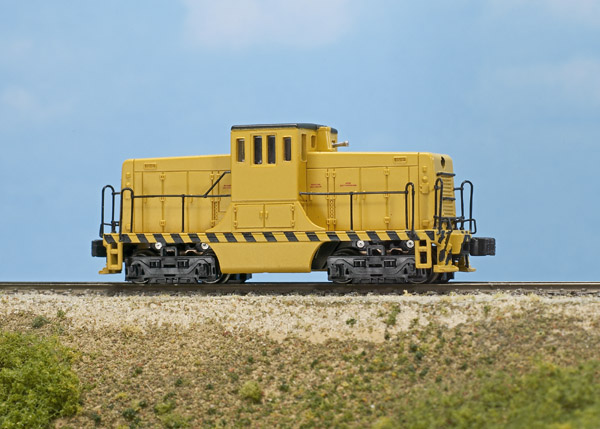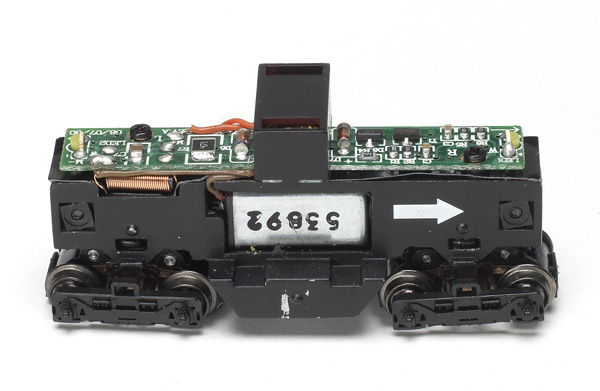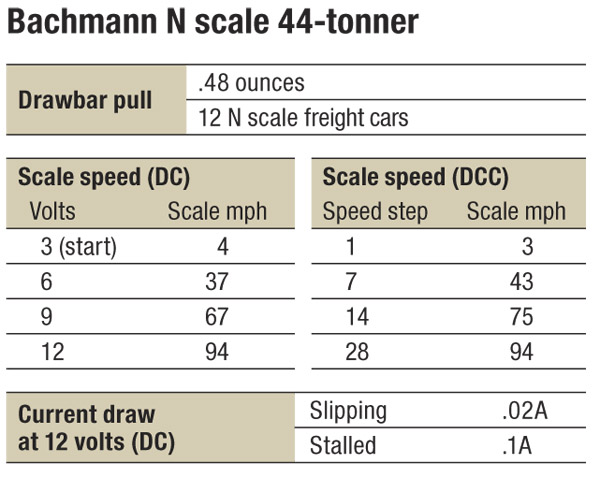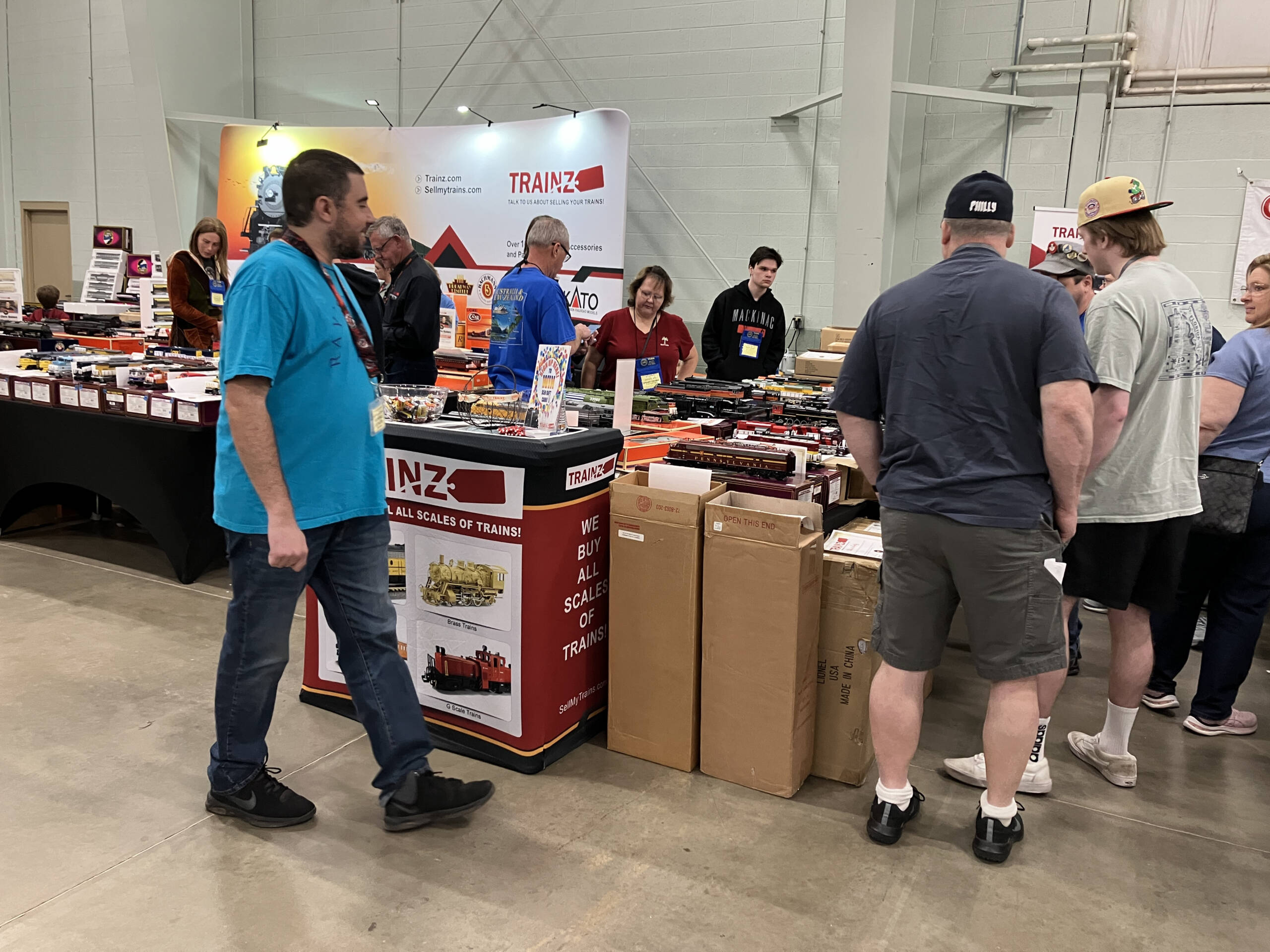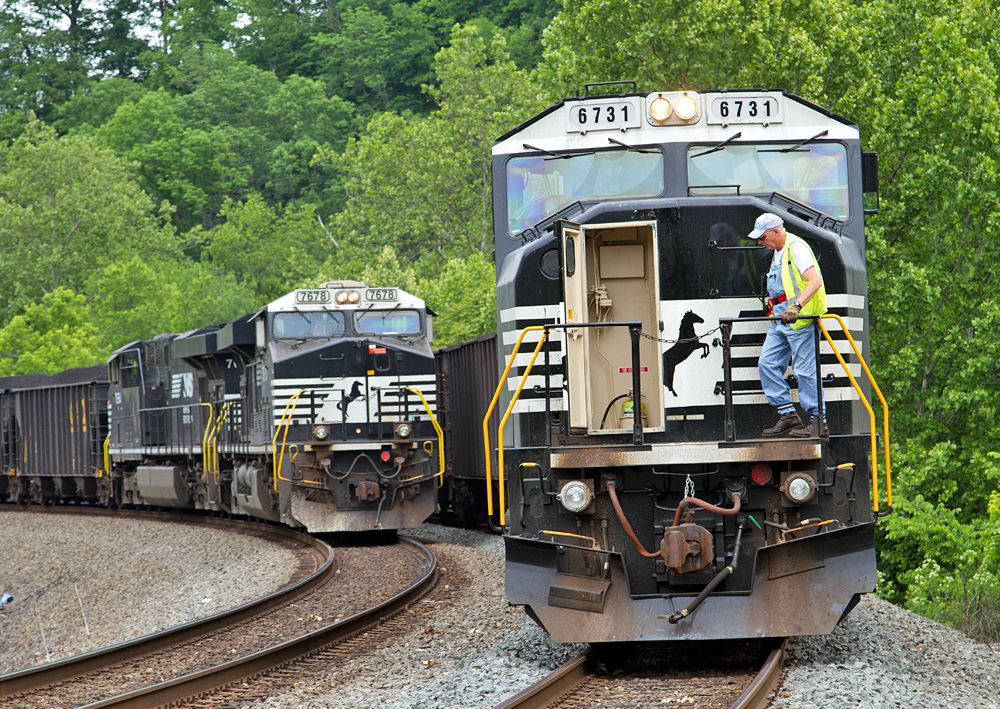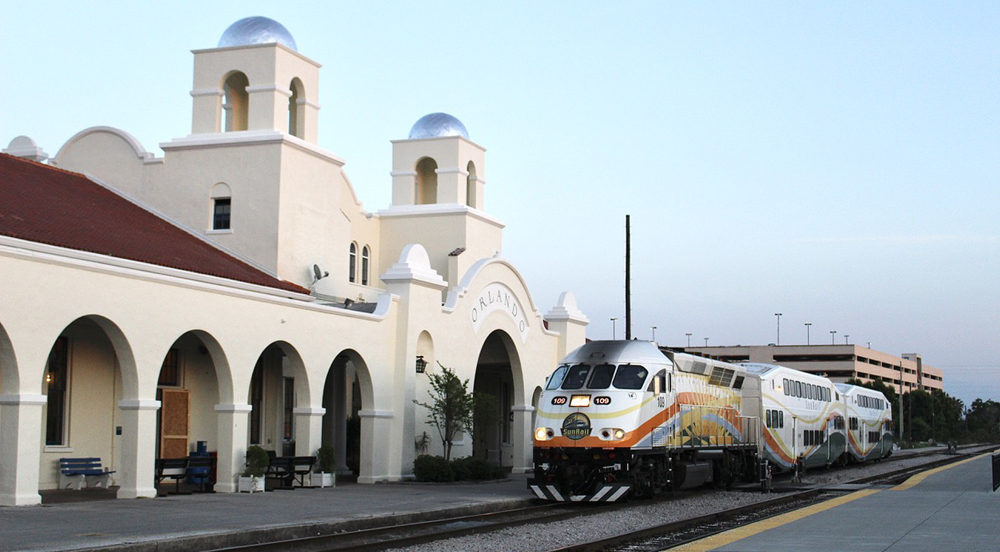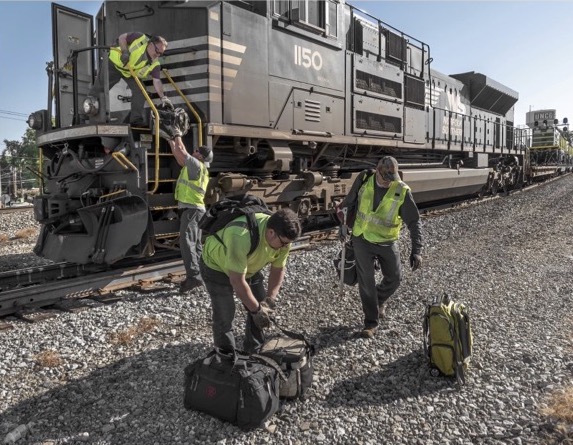Prototype. A 1937 union rule stated that any locomotive weighing more than 96,000 pounds (48 tons) had to be manned by both an engineer and fireman. The General Electric 44-ton switcher could legally be manned by one operator.
Built between 1940 and 1956, the GE 44-tonner was powered by two V-8 diesels that produced between 350 and 410 hp. These diminutive switchers served mainly industries, but some Class 1 railroads, including the Pennsylvania RR and the Atchison, Topeka & Santa Fe Ry., also purchased them. You’ll still find some GE 44-tonners in service today at industries and hauling tourist trains.
General Electric made modifications to the 44-ton switcher during the locomotive’s production run. Railfans use the term “phase” to describe the detail changes that appeared on the 44-tonner during its production run. The Bachmann model is of what railfans refer to as the phase IV body style, which features radiator shutters on each end, round headlight cases, and small rectangular air intakes along the top of the hoods on each side.
The body shell is plastic and the molded-in detail matches prototype photos of a phase IV 44-tonner. All the separately applied handrails and stanchions are made of flexible acetal plastic to help the thin, scale-profile parts resist breaking. The air horn is also separately applied and painted silver.
The paint on the body shell is smooth and evenly applied without obscuring any of the molded detail. The color separation between the black and yellow along the roof line is sharply defined. The black safety stripes on the pilots and along the bottom sill are also well done.
The truck sideframes and couplers are unpainted black plastic. The couplers have fixed knuckles, but they’ll automatically couple with the operating knuckle couplers of N scale rolling stock.
The mechanism takes up most of the space inside the body shell, so there isn’t room for an interior or engineer figure.
Mechanism. After removing the front and rear couplers, I carefully lifted off the body shell. It’s a tight fit, so I used a toothpick to help me separate the sides of the body shell from the chassis.
To aid in reassembly, the front end of the chassis is marked with a white arrow. The front of the body shell has the air horn on the end of the cab.
The model’s can motor is encased inside a split die-cast metal frame. Two worms transfer power from the motor to two gearboxes. One gearbox is mounted above each truck, so all four axles are powered.
The DCC decoder is attached to the top of the frame by two screws and measures 5/16″ x 115/16″. A white light-emitting diode (LED) is mounted on each end of the decoder to illuminate the headlights. Unlike the prototype, the model’s headlights turn on or off automatically according to the locomotive’s direction.
The model has enough pulling power for a light-duty industrial switcher. The 44-tonner has a drawbar pull equivalent to 12 free-rolling N scale freight cars on straight and level track.
The locomotive didn’t stall and its headlight didn’t flicker as I ran it through the turnouts and crossovers of our N scale layout.
Tight-radius curves aren’t a problem for this switcher. The model can easily handle 93/4″ radius curves. I also ran the Bachmann 44-tonner through a 6″ radius curve of flextrack.
In DCC I changed the model’s address without any difficulty. Pressing function 0 on the DCC throttle turns the headlight on or off. Function 1 dims the headlight.
With accurate details and impressive pulling power for a locomotive of its size, the Bachmann Spectrum GE 44-tonner is a great choice for a light-duty or industrial switcher on your N scale layout.
Price: $100
Manufacturer
Bachmann Trains
1400 E. Erie ave.
Philadelphia, PA 19124
www.bachmanntrains.com
Road names: Baltimore & Ohio; New York, New Haven & Hartford; Pennsylvania. Painted and unlettered versions include yellow (shown) and red with yellow stripes.
Era: 1940 to present day
Features
All-wheel drive and electrical pickup
Can motor
Constant light-emitting diode (LED) headlights
Dual-mode DCC decoder
Metal RP-25 contour wheels in gauge
Couplers with non-operating knuckled mounted at correct height
Weight: 1.25 ounces





